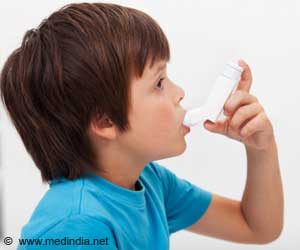Highlights
- Researchers have linked the risk of developing allergies and asthma during childhood to the microbes in the baby’s gut during infancy.
- Infants who developed allergy or asthma in childhood had a particular pattern of microbes in their digestive tract.
- Thus, if the microbial content of the intestines is altered, it may be possible to reduce the risk of allergy or asthma later in life.
In their study, researchers collected stool samples from diapers of one-month old infants and stored them on ice. They conducted repeated follow-ups during the first year of life, and then checked the infants for allergies at the age of two and for asthma around their fourth birthdays.
The stool samples were recently analysed to check for the presence of microbiome features.
The researchers found that in the stool samples of 11 out of the 130 infants included in the study, key types of gut bacteria like Bifidobacterium, Akkermansia and Faecalibacterium were low in levels while certain resident fungal species like Candida and Rhodotorula were relatively high. This particular pattern of microbes in the gut of infants was linked to a three-fold higher risk of developing allergic reactions by age two and asthma by age four.
The researchers also examined the stool samples for the metabolic by-products of microbes and discovered that neonates who had healthy gut microbes produced fat molecules that normally reduce inflammation and nourish the immune cells called T-regulatory cells, which determine the overall health of the immune system.
Co-senior author Susan Lynch, PhD, a UCSF associate professor of medicine, says that the discovery represents an opportunity to develop new treatments that could stave off allergies and asthma before they become established.
"We have been working for over a decade, trying to figure out why some children get asthma and allergies and some don't," said co-senior author Christine Cole Johnson, PhD, MPH, who is chair of public health sciences in the Henry Ford Health System. "It seems that the microbial communities within the body could be the keystone to understanding this and a number of different immune diseases."
"Asthma has doubled in prevalence in modern "westernized" societies about every 20 years for the past 60 or 70 years, so an effective strategy for prevention is becoming an urgent need for public health," added Homer Boushey, MD, a professor of medicine at UCSF, and member of the research team. "By focusing on the differences in microbial functions -- in their metabolic products and their effects on immune function -- this kind of study helps define the pathway we'll need to follow to prevent this disease,” he added.
"Humans have co-evolved with microbes and as a result we rely on their genomes for certain critical functions. We believe this is particularly true during the earliest stages of human development," Lynch said. "But lifestyles have changed dramatically over the past several decades: We've significantly reduced our exposure to these environmental microbes our bodies rely on. Having a dog track the external environment into the home may be just one way to improve the breadth of microbes babies are exposed to in very early life."
The researchers hope these findings will spur development of tests to detect signs of an unhealthy gut microbiome in infants and to implement early-life interventions to shift microbial ecosystems towards a healthier state and thereby prevent childhood allergies and asthma.
Management of Childhood Asthma
- Early identification of symptoms of allergies and asthma by consulting allergist.
- Improving quality of life by keeping symptoms under control through medication.
- Monitoring lung functions
- Avoid situations or substances that trigger attacks of asthma.
- Provide information on healthy eating, exercise, avoidance of tobacco smoke, maintaining healthy weight and immunization.
- Fujimura KE et al. Neonatal gut microbiota associates with childhood multisensitized atopy and T cell differentiation. Nature Medicine (2016) doi:10.1038/nm.4176
- Overview - Asthma - (http://acaai.org/asthma/about)
- Childhood Asthma - (http://www.mayoclinic.org/diseases-conditions/childhood-asthma/home/ovc-20193095)
- Global burden of asthma among children. - (http://www.ncbi.nlm.nih.gov/pubmed/25299857)
- Asthma Surveillance Data - (http://www.cdc.gov/asthma/asthmadata.htm)
- Managing asthma in children - (http://www.asthmahandbook.org.au/management/children)
















